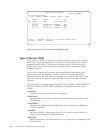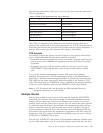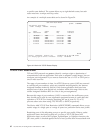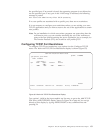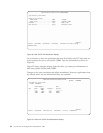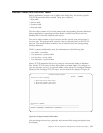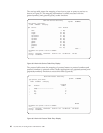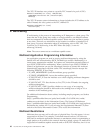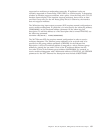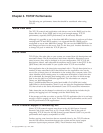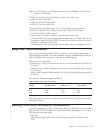
The TCP/IP interface now points to a specific PVC instead of a pool of SVCs.
ADDTCPIFC INTNETADR('9.4.73.65') LIND(X25LINE)
SUBNETMASK('255.255.255.192') PVCLGLCHLI(001)
MAXSVC(0)
The TCP/IP remote system information no longer includes the X.25 address to be
called. Instead, the entry points to the PVC channel ID.
ADDTCPRSI INTNETADR('9.4.73.66')
PVCLGLCHLI(001)
IP Multicasting
IP multicasting is the process of transmitting an IP datagram to a host group. The
hosts that are in the group may reside on a single subnet or on different subnets
that are connected by multicast-capable routers. Hosts may join and leave groups
at any time. There are no restrictions on the location or number of members in a
host group. For more information about IP multicasting, refer to RFC 1112, Host
Extensions for IP Multicasting in the RFC Editor Site (http://www.rfc-
editor.org/rfc.html).
Note: The server cannot act as a multicast-capable router.
Multicast Application Programming Information
An application program can send or receive multicast datagrams by using the
Sockets API and connectionless, SOCK_DGRAM type sockets. Multicasting is a
one-to-many transmission method. You cannot use connection-oriented sockets of
type SOCK_STREAM for multicasting. When a socket of type SOCK_DGRAM is
created, an application can use the setsockopt() function to control the multicast
characteristics associated with that socket. The setsockopt() function accepts the
following IPPROTO_IP level flags:
v IP_ADD_MEMBERSHIP: Joins the multicast group specified.
v IP_DROP_MEMBERSHIP: Leaves the multicast group specified.
v IP_MULTICAST_IF: Sets the interface over which outgoing multicast datagrams
should be sent.
v IP_MULTICAST_TTL: Sets the time to live (TTL) in the IP header for outgoing
multicast datagrams.
v IP_MULTICAST_LOOP: Specifies whether or not a copy of an outgoing
multicast datagram should be delivered to the sending host as long as it is a
member of the multicast group.
For additional information about sockets, including sample programs, see Sockets
Programming
(http://publib.boulder.ibm.com/pubs/html/as400/v5r1/ic2924/info/rzab6/
rzab6soxoverview.htm) in the Information Center. The System API Reference
(http://publib.boulder.ibm.com/pubs/html/as400/v5r1/ic2924/info/apis/api.htm)
documents the sockets API. If you are using the Supplemental Manuals CD, then
switch to the iSeries Information Center CD to access this information.
Multicast Restrictions
Multicast does not map well to all types of physical lines. For this reason, it is not
supported on all lines. For example, a switched network such as X.25 does not
lend itself to multicast applications because no mechanism exists for transmitting a
single packet to all systems in the network that have joined a group. IP multicast is
supported on broadcast capable networks and on SLIP/PPP interfaces, but it is not
68 OS/400 TCP/IP Configuration and Reference V5R1



